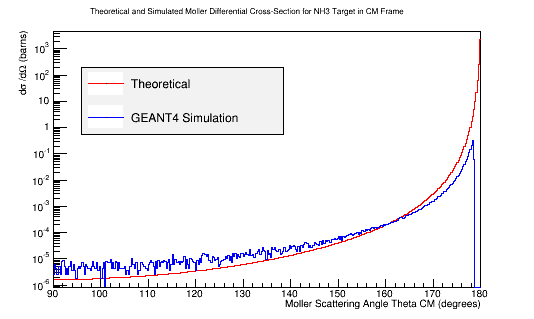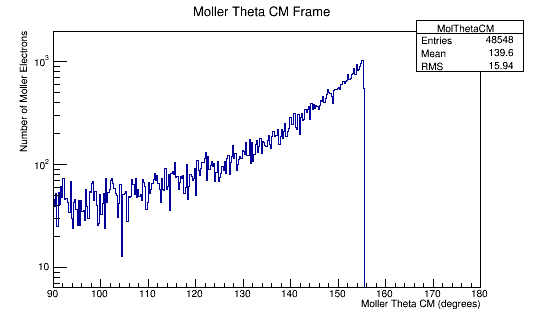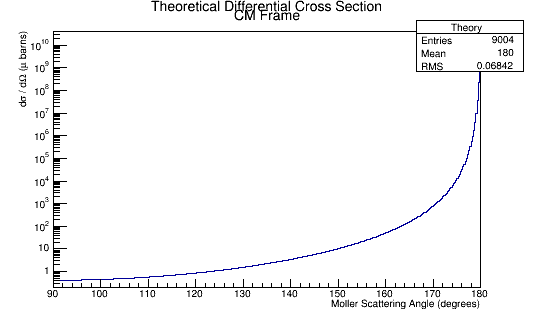Known Moller differential cross section
Comparing experimental vs. theoretical for Møller differential cross section 11GeV
Using the equation from [1]
This can be simplified to the form
Plugging in the values expected for a scattering electron:
Using unit analysis on the term outside the parantheses, we find that the differential cross section for an electron at this momentum should be around
The trigonometric function part of the equation comes out to it's minimum of 9 at 90 degrees.
Using the conversion of
We find that the differential cross section scale is
Converting the number of electrons to barns,
where ρtarget is the density of the target material, ltarget is the length of the target, and iscattered is the number of incident particles scattered.
For a ammonia target,
Ammonia density:
Molecular weight calculation:
For 400 million incoming electrons
Combining these plots, and rescaling the Final Theta in the Center of Mass for barns:
TH1F *Combo=new TH1F("TheoryExperiment","Theoretical and Experimental Differential Cross-Section CM Frame",360,90,180);
TH1F *Combo2=new TH1F("TheoryExperiment2","Theoretical and Experimental Differential Cross-Section CM Frame",360,90,180);
Combo->Add(MolThetaCM,8.87e-8);
Combo2->Add(Theory,1e-1);
Combo->Draw();
Combo2->Draw("same");


